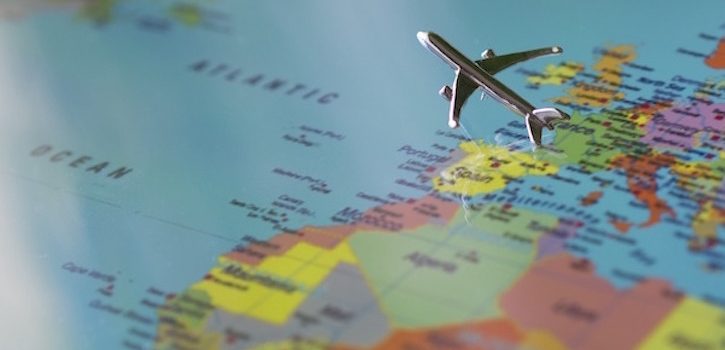Expanding your business to international markets is no easy feat. While going abroad is a great way to grow your sales, especially when you’ve hit a wall in your home market, it also comes with a host of risks and challenges.
Even big companies aren’t immune to international failure, like Walmart in Germany, Carrefour in Russia, Tesco in the US and Starbucks in Australia. Despite being resounding successes at home, these giants failed to attract local consumers in these countries.
So why do some companies fail when trying to enter a new market? We’ve listed a few of the most common mistakes (and some real-life examples) so that you can avoid them!
Mistake 1: Not having a strategy or a plan
One of the main reasons that businesses face problems is that they rush into expanding abroad without planning ahead. Instead, it’s important to analyze which markets to target, define clear goals, make a detailed action plan and have an accurate understanding of the related costs. International expansion can’t be improvised and requires a thorough foundation before taking any action.
Ask yourself the following questions before taking any major steps:
- Company: Is our company ready to expand to foreign markets? Is our business stable enough? What are our main weaknesses? Is there a demand for our product or service in other countries?
- Target markets: What elements make a foreign market attractive for our company (population, GDP, Internet penetration rate, regulations, etc.)? Which markets should we target based on these criteria? Are we capable of entering several markets at once?
- Organization: What kind of organizational and operational processes do we need put in place? Do we have the necessary managerial skills?
- Financing: How will we finance our expansion? Do we have the required resources to manage our international and domestic activities? What kind of return are we expecting and how soon?

Mistake 2: Not doing enough research on your target market
On top of planning your expansion, you need to ensure that you have a thorough understanding of your local market. Many companies skip this step (we’ve mentioned a few already), thinking that all markets are the same as their home markets.
Get to know the following aspects about your target country:
- Local industry trends and forecasts
- Key players: competitors, suppliers, partners
- Market dynamics: distribution channels, marketing channels, etc.
- Culture and traditions
- Regulations: taxes, legal, customs
Example: Starbucks in Australia
The coffee giant opened their first Australian store in 2000 and quickly grew to 84 stores across the country. Eight years later, Starbucks had to close 60 stores with losses of over 140 million dollars.
One of the main reasons for this disastrous outcome was Starbucks’s inability to properly analyze their local competition: McDonald’s (McCafe) and Gloria Jeans were already well-established and had a better price compared to Starbucks. They were also better adapted to consumer’s coffee preferences.
> Learn more about Starbuck’s case

Mistake 3: Underestimating the importance of cultural differences
Many companies that don’t bother to research foreign markets ahead of time often make crucial errors in their execution, ultimately leading to failed expansion. The most common mistake is to assume that your business model can be duplicated across international markets without adapting to local marketing channels, consumer behavior or product preferences.
Example: Walmart in South Korea
This was one of the major mistakes, among others, that Walmart made while trying to establish itself in South Korea. The company opened 16 stores in 1988 but closed all of them and completely abandoned their operations by 2006.
As it did in many other countries Walmart didn’t try to understand the cultural differences between their home market in the US and in South Korea. They didn’t adapt the height of the signage and shelving to local standards and sold prepackaged fish, whereas local consumers were used to seeing fish still swimming in the aquarium before buying it.

Mistake 4: Going at it alone (and ignoring key local players)
No one said that you need to enter a new market alone. Working with a local partner who already knows the market can save a significant amount of time and money.
In some cases, it may be beneficial to acquire a well-established local business, allowing you to benefit from their existing client base and reputation.
Otherwise, it may be necessary to open an office in the new market with a local team that has a full understanding of business practices and consumer behavior.
Many companies, however, try to enter foreign markets as a lone wolf, thinking that they already have everything they need to establish themselves.
Example: Carrefour in Russia
In late 2009, only 4 months after opening their stores in Russia, Carrefour announced that they were closing operations in the country altogether. According to Carrefour, there were insufficient acquisition opportunities, which would prevent them from attaining a strong foothold in the market.
> Learn more about Carrefour in Russia
Mistake 5: Expecting a return on investment too soon
International markets are a significant source of growth, but it’s important to remember that it’s a long term strategy. Expanding to new markets involves adapting to the new country, building new relationships and a reputation, as well as analyzing and understanding the dynamics of the local business environment. It’s quite rare that a new market yields a return on investment within the first year or even several years.
That’s why it is absolutely vital to allocate a sufficient amount of financing to enter a new market. Many companies underestimate the investment required, as unexpected costs will creep up often, including changes in regulations, new taxes, intellectual property issues, changes in economy, building costs, etc.
It’s a good idea to estimate international expansion costs, but it’s also very important to give yourself buffer room in case of unexpected expenses.
Example: Tesco in the US
Before launching their “Fresh & Easy” stores in the US, Tesco researched the American market and consumer behavior. Unfortunately, a lack of suppliers meant that they had to build their own production center, with a cost of more than $100 million. This was quickly followed by the 2007 financial crisis, which had a strong negative impact on sales. Faced with these losses, Tesco was unable to open new stores and therefore couldn’t recover the investment in the production center. Six years later, Tesco finally sold its 150 stores to Yucaipa and pulled out of the US with 1.4 billion euros in losses.
> Learn more about Tesco’s failure
Don’t let all of these failure stories get you down! International expansion is a key growth strategy in today’s global business environment; however, careful preparation, a solid strategy and an ability to quickly adapt to changes are crucial for successfully expanding abroad.







